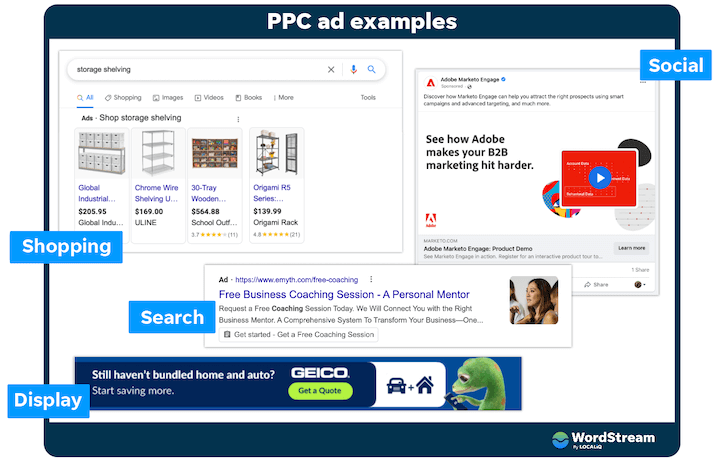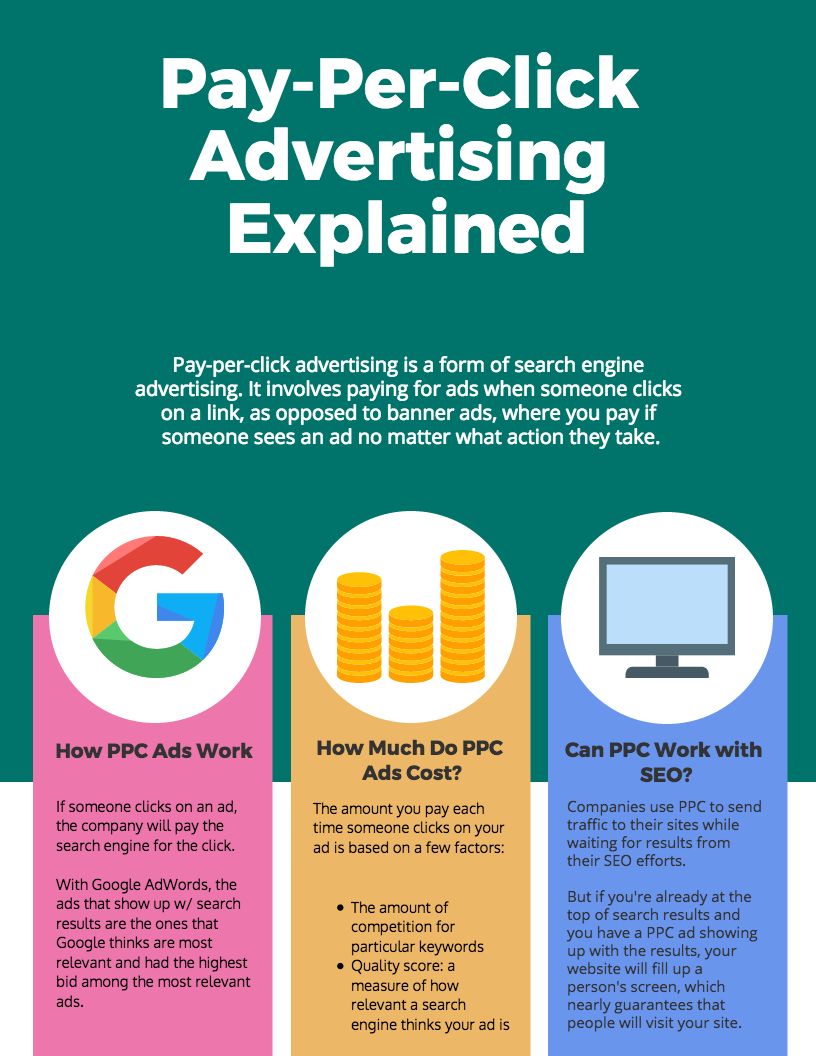PPC Advertising Explained: A Comprehensive Guide for 2025
Pay-per-click (PPC) advertising is one of the most effective and measurable ways to drive traffic to your website and boost conversions. If you are new to digital marketing or looking to expand your advertising strategy, understanding how PPC works is essential. In this guide, we will explore everything you need to know about PPC, from its definition to how it can benefit your business in 2025.

What is PPC Advertising?
PPC advertising is a model of internet marketing where advertisers pay a fee each time their ad is clicked. Rather than earning organic visits through SEO, you buy visits to your website. It’s a way to “buy” visits rather than “earn” them. This model is primarily used in search engines like Google, Bing, and social media platforms like Facebook, Instagram, and LinkedIn.
The most popular form of PPC is search engine advertising, where advertisers bid on keywords relevant to their business. When users search for those keywords, the ads appear at the top or bottom of search engine results pages (SERPs).
Why Choose PPC?
PPC advertising is one of the most efficient digital marketing strategies because it allows businesses to target their ads to a specific audience. Here’s why it’s a great choice for driving traffic:
-
Immediate Results: Unlike SEO, which takes time to build, PPC ads can generate immediate traffic as soon as they are launched.
-
Targeted Reach: With PPC, you can target users based on factors like demographics, location, device, and search intent.
-
Measurable ROI: PPC campaigns provide clear data on ad performance, allowing you to measure ROI accurately.
How Does PPC Work?
In a PPC campaign, advertisers create ads and bid on specific keywords relevant to their product or service. The search engine then displays these ads when users search for those keywords. The bid determines the placement of the ad.
However, it’s not just about how much you bid. Quality Score is another critical factor in determining ad placement. It’s a metric used by search engines like Google that considers your ad’s relevance, the quality of your landing page, and your click-through rate (CTR). A higher Quality Score can result in lower costs and better placement.
Here’s a quick overview of how PPC works:
-
Keyword Research: Identify the keywords your target audience is searching for.
-
Ad Creation: Create compelling ads that align with your keywords and landing page.
-
Bid Strategy: Set a budget and bid for the chosen keywords.
-
Ad Placement: The search engine determines ad placement based on your bid and Quality Score.
-
Optimization: Continuously monitor and optimize the campaign for better performance.

Types of PPC Ads
There are several types of PPC ads that businesses can use depending on their goals and target audience. Here are the most common types:
1. Search Ads
These are the ads that appear on search engine results pages (SERPs). When a user types in a query that matches your chosen keywords, your ad appears above or below the organic search results. This type of PPC is perfect for businesses targeting users with strong purchase intent.
2. Display Ads
Display ads appear on websites across the internet. These ads can be in the form of banners, videos, or images, and they are displayed based on the user’s interests, demographics, or previous browsing behavior.
-
Pros: Reach a large audience and increase brand awareness.
-
Cons: Display ads have a lower click-through rate (CTR) compared to search ads.
3. Social Media Ads
Social platforms like Facebook, Instagram, and LinkedIn allow businesses to run PPC campaigns. These ads can be targeted based on user behavior, interests, age, location, and more.
-
Facebook Ads: Ideal for targeting specific demographics and interests.
-
Instagram Ads: Best for visually driven campaigns targeting younger demographics.
-
LinkedIn Ads: Perfect for B2B marketing and targeting professionals.
4. Shopping Ads
If you run an e-commerce store, Google Shopping Ads can display your product image, price, and store name directly on the search engine results page. These ads are great for driving conversions since they show users exactly what they are looking for.
5. Video Ads
Platforms like YouTube offer video ads that play before, during, or after video content. Video ads can be used for both brand awareness and direct conversions, depending on the message.
How to Create an Effective PPC Campaign
Creating a successful PPC campaign requires strategic planning and execution. Here’s a step-by-step guide to help you get started:
1. Define Your Campaign Goals
What do you want to achieve with your PPC campaign? Your goals should guide your strategy and influence decisions such as which platform to use, your bidding strategy, and the type of ad you choose.
-
Brand Awareness: Use display or video ads to reach a broad audience.
-
Lead Generation: Focus on search ads with high-intent keywords.
-
Sales/Conversions: Use shopping ads or remarketing campaigns.
2. Conduct Keyword Research
Keyword research is the foundation of any PPC campaign. Tools like Google Keyword Planner or SEMrush can help you identify high-volume keywords relevant to your business. Choose a mix of short-tail and long-tail keywords to target a broad audience while focusing on high-conversion phrases.
3. Craft Compelling Ads
Your ad copy should be clear, concise, and relevant to your target audience. Include a strong call-to-action (CTA) that prompts users to take immediate action. Test multiple variations of ad copy to determine which resonates best with your audience.
4. Optimize Landing Pages
The landing page linked to your ad should be aligned with the message of the ad. Ensure that the page is optimized for conversions by having a clear CTA, fast load times, and relevant content.
5. Set a Budget and Bid Strategy
Decide on your daily or monthly budget and how much you are willing to bid for each click. You can choose from several bidding strategies, including manual CPC, target CPA, and maximized conversions.
Benefits of PPC Advertising
PPC advertising offers numerous benefits that can help businesses grow quickly and efficiently. Some of the key advantages include:
-
Immediate Traffic: Once your ads are live, you can see immediate results in terms of traffic and leads.
-
Targeted Reach: PPC allows you to reach specific audiences based on location, demographics, interests, and search behavior.
-
Budget Control: You have full control over how much you spend on your campaigns and can adjust your budget based on performance.
-
Measurable Results: PPC platforms provide in-depth analytics that allows you to track ROI, conversions, and other important metrics.

PPC Advertising Mistakes to Avoid
While PPC is a powerful tool, there are several common mistakes that businesses should avoid:
1. Neglecting Keyword Research
Failing to conduct thorough keyword research can result in targeting the wrong audience or missing out on valuable search queries. Make sure to continuously optimize your keyword list based on performance data.
2. Ignoring Ad Testing
Ad copy testing is crucial for determining what resonates with your audience. Don’t rely on one ad; test multiple variations to see what works best.
3. Not Optimizing Landing Pages
If your landing page isn’t optimized for conversions, you could be wasting money on clicks that don’t convert. Ensure that your landing page has a clear, compelling call to action and is easy to navigate.
4. Overbidding on Keywords
Bidding too much for competitive keywords can quickly eat up your budget without yielding results. Focus on keywords with a good balance of search volume and cost-per-click (CPC).
FAQs About PPC Advertising
1. How much does PPC advertising cost?
The cost of PPC varies based on the platform, keywords, competition, and bid strategy. On Google Ads, for example, the average cost-per-click (CPC) can range from $1 to $2 for search ads.
2. Is PPC worth the investment?
Yes, PPC is a great way to drive targeted traffic to your website quickly. If done correctly, it can generate a positive ROI and help you achieve your marketing goals.
3. How long does it take to see results from PPC?
PPC campaigns can show immediate results, but it may take a few weeks to fine-tune your ads and reach optimal performance. Continuous optimization is key to long-term success.
Conclusion
PPC advertising is an excellent way to increase visibility, drive traffic, and achieve specific business goals. By understanding how PPC works, creating effective campaigns, and optimizing performance, you can maximize the benefits of this powerful advertising tool. Ready to start your PPC journey? Contact us today to learn more about how we can help you achieve your marketing objectives.

